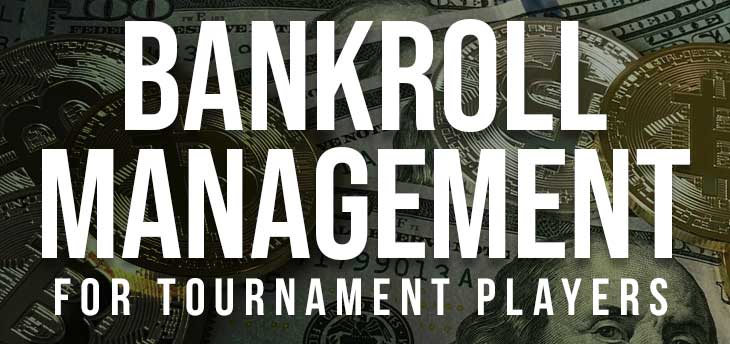A Guide to Poker Bankroll Management for Tournament Players

Everyone’s engaged in a monetary melee, right? Who wouldn’t crave a cornucopia of cash cascading into their coffers? But beware, friends, because not all cash flows are created equal, and the windfall you seek may whirl you into a whirlpool of woe if mismanaged. Ah, do I hear you ponder, “What on earth is he rambling about?” This riddle of riches, my friends, is the perpetual puzzle of poker bankroll management.
Ace the Arithmetic: Understanding your Assets
Before we dive headfirst into the depths of dollars and dimes, we need to master the math. Now don’t squirm – I promise, no Pythagoras or perplexing paradoxes here. All you need are three little things: your total bankroll, the stakes you’re playing at, and the amount you’re willing to risk. There’s a sweet spot in that triangle, a point where risk and reward meet in perfect harmony. And it’s our mission, dear readers, to find it.
Consider this: if your total bankroll is $1,000 and you’re buying into a tournament at $100, you’re wagering 10% of your entire bankroll. Sounds a smidge too steep? Absolutely, because it is. You’re a strategist, not a gambler. At this rate, a mere string of bad beats can obliterate your entire bankroll.
So, what’s the magic number? For tournament players, a guideline often floated is to never enter a tournament where the buy-in is more than 2% of your total bankroll. If you’re a fan of figures, that means having enough to cover 50 buy-ins. Stick to this strategy, and you’ll remain in the game longer, navigating through the inevitable ups and downs.

The Battle of Bets: Navigating the Terrain
Understanding the landscape of the poker table is crucial to your survival. The stakes you play, the opponents you face, and the type of tournaments you enter – all of these shape your bankroll strategy.
Say you’re playing high-stakes tournaments against top-tier players. Your bankroll should be heftier to handle the rough seas of variance. However, if you’re dipping your toes in lower-stakes games with players who don’t know their flush from their full house, a leaner bankroll might suffice.
Here’s an example. If you’re battling it out in a 1,000 player tournament, your variance is going to be higher than if you’re playing a 10-handed sit and go. The larger the field, the more challenging it becomes to finish in a money spot consistently. Therefore, in the vast vortex of multi-table tournaments, a more substantial bankroll buffer is your buoy.
Carving out Cash: Withdrawals and Deposits
Let’s talk about the flow of funds, the rivers of riches – deposits and withdrawals. Knowing when to deposit additional funds and when to siphon off some of your earnings is a balancing act. A wobble here, a teeter there, and your whole bankroll could come tumbling down.
What if you’re on a winning streak, with cash cascading into your account like a waterfall? Is it time to kick back, pop open a bottle of bubbly, and buy that ridiculously expensive super car you’ve been eyeing? Not quite.
The key lies in setting predefined rules for withdrawals and sticking to them like a barnacle to a ship’s hull. Maybe you withdraw 20% of all winnings over a certain amount. Perhaps you deposit more if your bankroll drops below a certain threshold. Setting these rules provides a lifeline, ensuring that even in the choppy waters of the poker sea, your financial ship stays afloat.
Daring Discipline: The Will to Walk Away
Can you fold pocket aces when you’re sure you’re beat? Can you walk away from a game when the odds are against you? The biggest bankroll won’t save you if you can’t discipline yourself to make the tough decisions.
Every poker pro has tales of players who’ve gone from rags to riches and back to rags because they lacked discipline. It’s about knowing your limits, understanding your skill level, and recognising when the cards just aren’t falling your way. It’s about making the hard choice to fold, even when your gut is telling you to push all-in.

Ending Elegantly: The Finale of Fortitude
Poker bankroll management is no less important than knowing when to raise, call or fold. It’s about managing the risk, walking the tightrope between caution and courage, and knowing when to take your profits off the table.
Your bankroll is your ammunition in the battle of bets. Manage it well, and you’ll have the tools to fight another day. Mismanage it, and you’ll be sent packing, your pockets turned out, wondering where it all went wrong.
In the grand scheme of the game, mastering bankroll management is a skill that transcends the poker table. It applies to life, investing, and every decision that involves risk and reward. It’s about more than just money. It’s about strategy, discipline, and the guts to make the hard decisions when they count the most.
So, are you ready to dive into the world of poker bankroll management? Are you prepared to face the risks, reap the rewards, and walk away a winner? Remember, poker isn’t just a game of chance; it’s a game of skill, strategy, and, yes, even arithmetic. The ball is in your court, or should I say, the chips are on your side of the table. Play them wisely.
